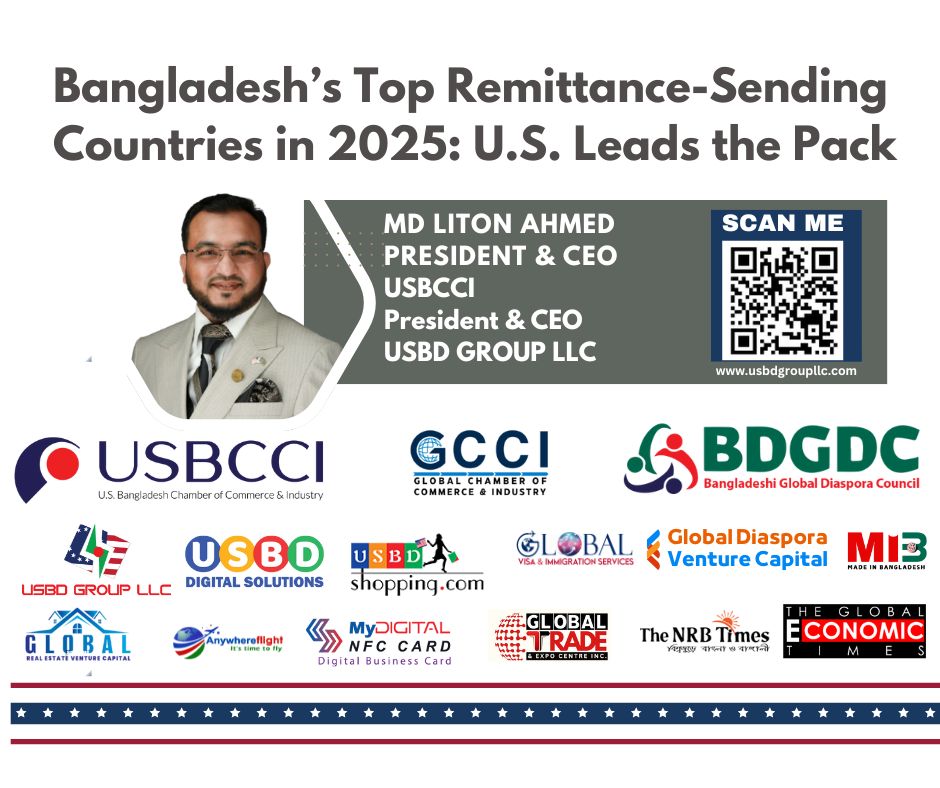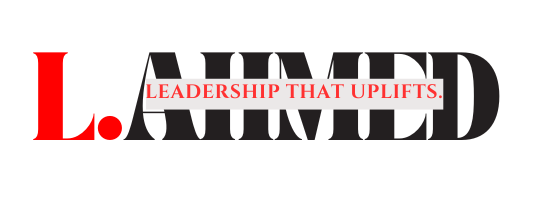Bangladesh’s Top Remittance-Sending Countries in 2025: U.S. Leads the Pack
Md Liton Ahmed
July 25, 2025

Remittance has long been the lifeblood of Bangladesh’s economy, acting as a powerful engine for poverty alleviation, rural development, and economic resilience. In 2025, this financial lifeline has reached record-breaking levels, with a striking shift in the global sources reshaping the remittance landscape.
Let’s dive into the numbers—and the stories they tell.
What Is Remittance and Why Does It Matter?
Remittance refers to the money sent by Bangladeshi migrants working abroad to their families and communities back home. For Bangladesh, it’s the second-largest source of foreign exchange—just behind the ready-made garments sector.
These remittances do more than boost reserves. They support millions of families, build village homes, fund education, create micro-businesses, and drive national development from the grassroots up.
Top 10 Remittance-Sending Countries to Bangladesh (FY 2024–25)
According to Bangladesh Bank and leading news outlets, here’s a snapshot of the top remittance-contributing countries from July 2024 to April/May 2025:
| 🌐 Country | 💰 Amount (USD Millions) |
|---|---|
| 🇺🇸 United States | $4,495.0 M |
| 🇦🇪 United Arab Emirates | $3,843.6 M |
| 🇸🇦 Saudi Arabia | $3,795.3 M |
| 🇬🇧 United Kingdom | $2,806.5 M |
| 🇲🇾 Malaysia | $2,446.0 M |
| 🇰🇼 Kuwait | $1,504.8 M |
| 🇮🇹 Italy | $1,487.8 M |
| 🇴🇲 Oman | $1,462.5 M |
| 🇶🇦 Qatar | $1,088.8 M |
| 🇸🇬 Singapore | $884.4 M |
-
✅ Total Remittance (July–May 2025): Over $24.5 billion
-
✅ Projected Year-End (July–June): Expected to exceed $27.5 billion
🇺🇸 USA Becomes the Top Remittance Source—A Historic First
For the first time in Bangladesh’s history, the United States has emerged as the largest single remittance-sending country, surpassing the long-dominant Gulf nations.
Between July 2024 and May 2025, Bangladeshi expatriates in the U.S. sent over $4.5 billion home. This remarkable shift reflects changing migration patterns—more skilled and semi-skilled workers are now settling in North America and Europe, leading to higher-value remittance flows compared to traditional labor destinations.
Gulf Countries Still Play a Vital Role
Despite the rise of the West, the Gulf region remains a cornerstone of Bangladesh’s remittance economy. The UAE and Saudi Arabia alone contributed nearly $8 billion combined. Countries like Malaysia, Oman, and Qatar continue to attract a large number of Bangladeshi workers, especially in low- and mid-skilled job sectors.
These regions remain critical as migration gateways for the country’s overseas workforce.
📅 Monthly Spotlight: February 2025 Snapshot
Here’s how remittance looked in just one month—February 2025:
-
🇺🇸 USA: $491.3 million
-
🇦🇪 UAE: $334.9 million
-
🇸🇦 Saudi Arabia: $328.8 million
-
🇬🇧 UK: $305.5 million
-
🇲🇾 Malaysia: $183.9 million
The monthly trend confirms the USA’s consistent lead and showcases the diversity of Bangladesh’s global diaspora.
Why These Shifts Matter
These emerging patterns in remittance flows signal deeper changes:
-
Migration Trends Are Evolving: An increasing number of professionals and students are relocating to the West, building careers in high-income sectors.
-
Policy Shifts Needed: To harness this momentum, Bangladesh must invest in skills development, language training, and diversified labor strategies targeting both new and traditional destinations.
-
Foreign Exchange Stability: Sustained high remittance inflows are crucial for strengthening forex reserves, supporting the Taka, and financing development initiatives.
Final Thoughts: More Than Just Money
Remittance is more than an economic metric—it’s a symbol of sacrifice, resilience, and love sent across continents. The evolving global patterns—from the rise of the USA to the enduring strength of Gulf partnerships—offer both opportunities and challenges.
As Bangladesh looks ahead, embracing this diversification will be key to empowering its workforce, maximizing global connections, and building a stronger, more resilient economy.
Remittance is not just money—it’s hope, opportunity, and the heartbeat of millions.
🔗 Sources: Bangladesh Bank, The Daily Star, The Business Standard, BSS News, UNB

